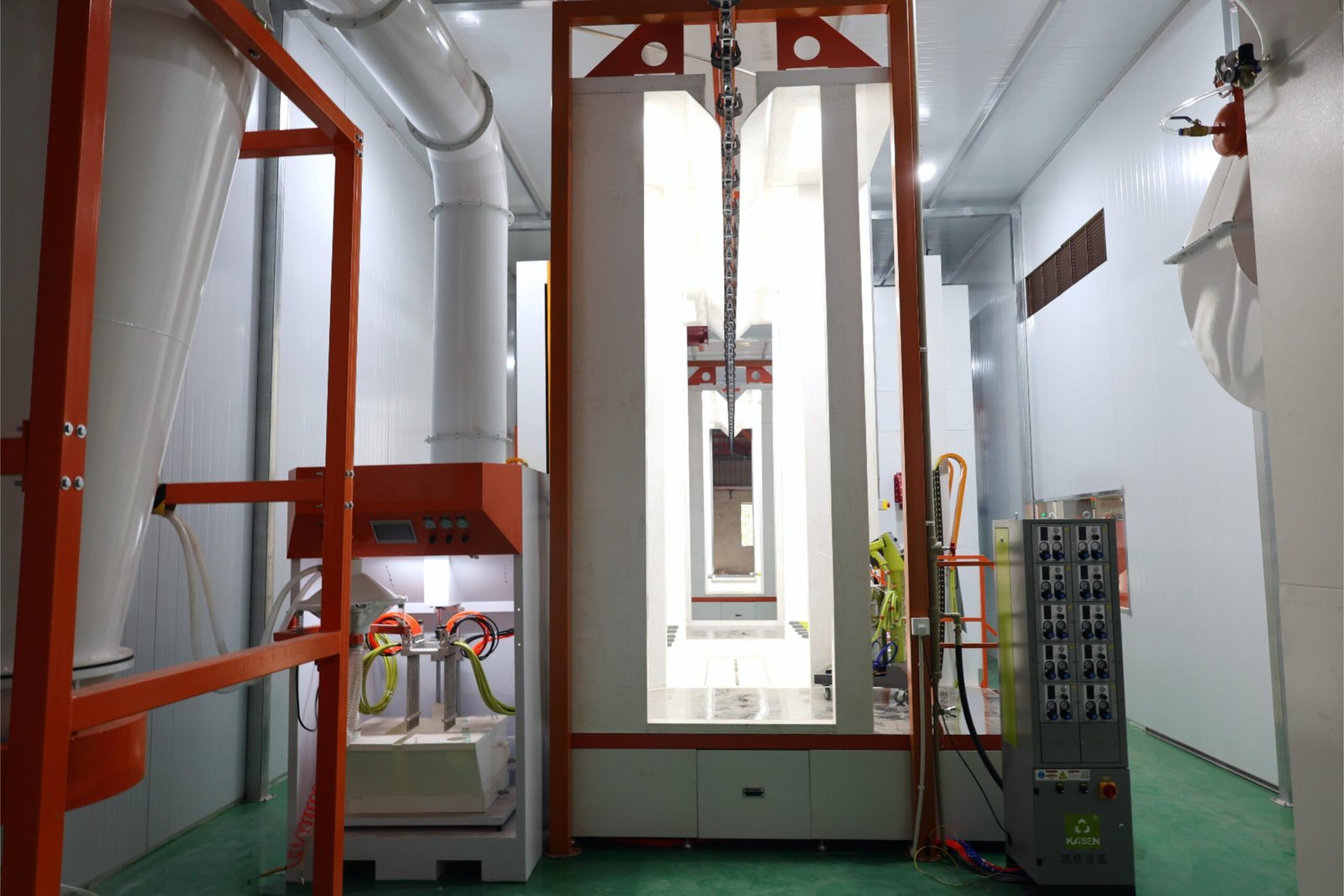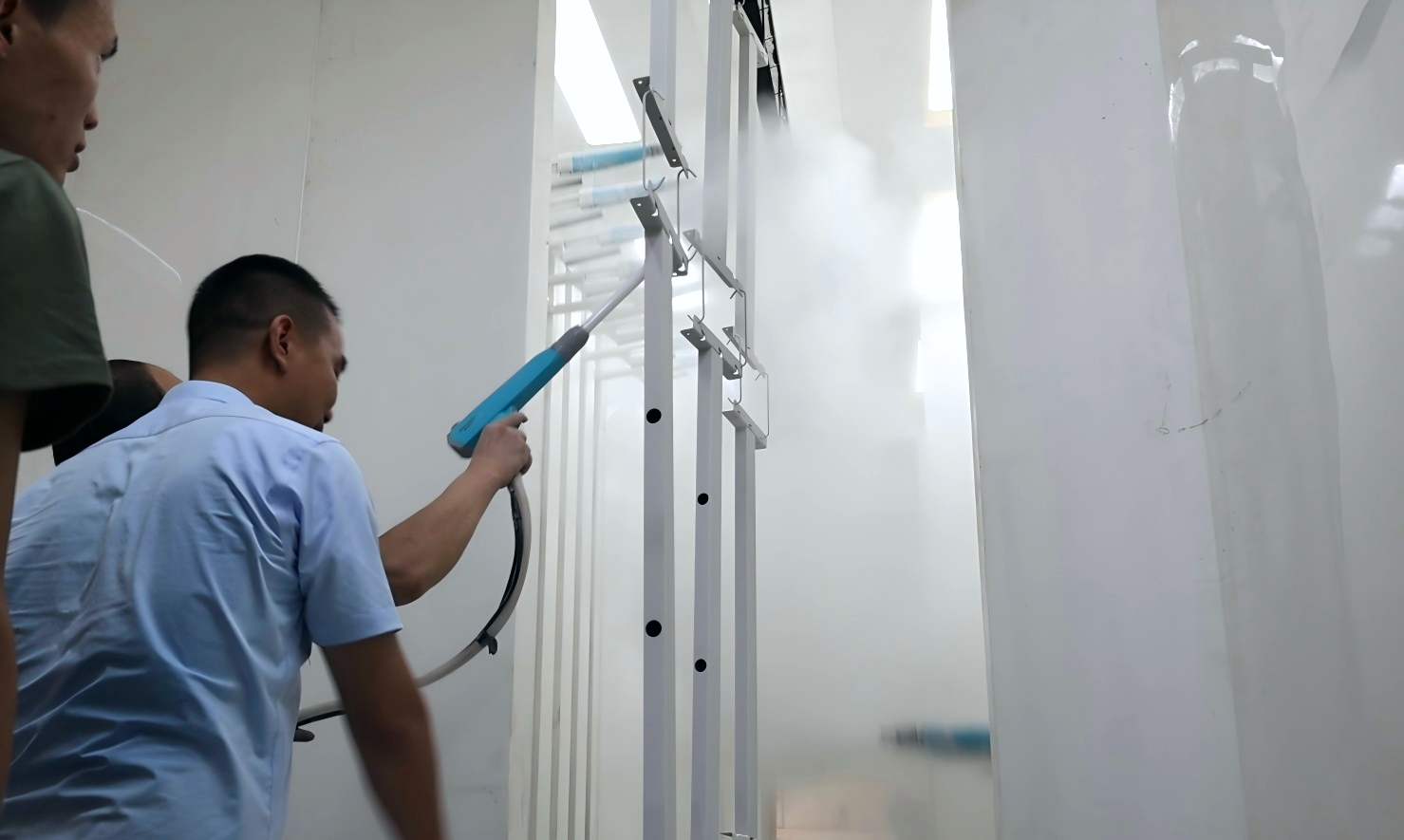What Equipment is Necessary for a Powder Coating Line?

Powder coating lines are critical systems used to apply protective and decorative coatings to metal surfaces. But setting one up requires more than just a spray gun. If you don’t have the right equipment, results can be uneven, wasteful, or even hazardous.
To run an efficient powder coating line, you need pre-treatment equipment, drying ovens, spray booths, application systems, recovery units, curing ovens, conveyors, cooling zones, and safety and quality control gear. Each part plays a specific role.
Without the right setup, even the best powder won’t perform well. So let’s look at each component and why it matters.
What is the purpose of pre-treatment equipment?

When a surface isn’t clean, powder can’t stick. That’s where pre-treatment comes in.
Pre-treatment equipment removes oil, rust, and dirt so that powder coating adheres strongly and lasts longer.
The most common types of pre-treatment include:
- Dip Tanks: Ideal for batch work. Substrates are fully submerged.
- Spray Washers: Nozzles spray cleaning solutions onto parts in a tunnel-like chamber.
- Ultrasonic Cleaners: For intricate shapes, ultrasonic waves help dislodge contaminants.
Then comes rinsing, followed by drying (more on that next). This ensures a clean, dry surface ready for powder.
Why are drying ovens essential after pre-treatment?
If moisture is left on a part, it can ruin the powder coat finish.
Drying ovens ensure parts are moisture-free before spraying begins, which prevents defects like bubbling and poor adhesion.
There are two main oven types:
| Oven Type | Best For | Notes |
|---|---|---|
| Batch Oven | Small batches, low throughput | Simple setup, easy control |
| Conveyor Oven | Continuous operations | High output, more automation |
Temperature consistency is key. If one part is hotter or cooler, it may not coat or cure evenly later on.
How do powder coating booths work?
Spraying powder can create a lot of mess and overspray. The booth keeps that under control.
A powder booth captures excess powder, keeps your workspace clean, and ensures powder is applied in a controlled environment.
You can choose:
- Manual Booths: Great for small-scale work and customized jobs.
- Automatic Booths: Include robotic arms or reciprocators for consistent spraying.
A booth needs:
- Strong airflow
- Easy-to-clean walls
- High-efficiency filters
- Compatible lighting and access
Some designs, like big cyclone booths, offer fast color change and high recovery rates.
How is powder applied in powder coating?
Spraying the powder is at the heart of the process—and electrostatics makes it stick.
Powder coating guns charge the powder with static electricity, which makes it stick to the grounded metal part.
You can use:
- Electrostatic Spray Guns (most common)
- Tribo Guns (charge by friction, good for certain powders)
- Fluidized Beds (dip the part into swirling powder)
Proper setup means adjusting voltage, air pressure, and distance. This ensures consistent coating thickness.
What role do recovery systems play?
Overspray happens—good recovery means less waste.
Powder recovery systems collect overspray, filter it, and return usable powder to the system.
Here are your recovery options:
| System Type | How It Works | Efficiency |
|---|---|---|
| Cyclone Separator | Uses centrifugal force | \~95% recovery |
| Cartridge Filter | Captures powder in filter media | High efficiency |
| Multistage Filter | Combines methods | Max performance |
In systems like large cyclone booths, powder goes through two stages of separation to ensure near-complete recovery.
Why do you need curing ovens?
Curing turns powder into a solid, protective film.
Curing ovens melt and fuse the powder coating, transforming it into a durable finish that resists scratches and corrosion.
Options include:
- Electric Curing Ovens
- Gas-Fired Ovens (fast and efficient for high output)
- Infrared Ovens (fast response, spot control)
Example: Gas curing ovens heat air using natural or LPG gas and circulate it to ensure even temperature, especially useful for large or complex parts.
What do conveyor systems do?
You can’t carry every part by hand.
Conveyor systems move parts automatically from one stage to another, keeping the line running smoothly.
Common types:
- Overhead conveyors: Suspend parts using hooks.
- Floor conveyors: For heavier or irregular-shaped parts.
- Power-and-free: Allow variable movement speeds or stops.
Matching conveyor speed with your cure times and spray rates is essential for synchronization.
Why is a cooling zone important?
Hot parts can damage packaging or delay inspection.
Cooling zones bring freshly cured parts down to a manageable temperature before handling or packing.
Air fans, open cooling tunnels, or water-misting systems can be used depending on line speed and material.
What equipment is used for safety and quality control?
Uncontrolled powder, high heat, and static electricity all pose risks.
Safety equipment protects your team and your workspace, while quality control ensures coatings meet spec.
Safety setup includes:
- Fire extinguishers
- Grounding systems
- Operator PPE
- Explosion-proof booth components
For quality control:
- Thickness gauges check coating consistency.
- Adhesion testers measure how well the coating sticks.
- Cure tests ensure the powder reached proper hardness.
Digital controls and automation help too. Some lines feature full smart control systems for process monitoring.
Conclusion
A powder coating line needs more than a spray gun. From cleaning to curing, each piece of equipment plays a key role in producing high-quality, efficient, and safe finishes.
